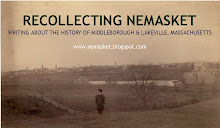.
In the early years of the Green School, attendance was not always the highest. In 1875-76, 21 pupils between 5 and 15 were enrolled at the Green and the average attendance during the course of the year was 61% (the town average was 69.67%). Partially, the reason for such low figures was that children were needed to assist with chores at home, particularly during the spring and fall terms when attendance fell to its lowest.
In an effort to improve attendance in the public schools, in 1875 the town adopted a series of “By-Laws Concerning Truant Children and Absentees from School.” Among them was a requirement that all children aged 7 through 15 “regularly attend some day school approved by the School Committee, unless engaged in some lawful business or employment” in which instance alternate schooling was expected. To enforce these regulations, a truant officer was appointed, reporting annually to the School Committee.
The suburban schools were particularly challenged as children were often needed to assist with agricultural duties. In 1904, a monthly attendance contest was established for these schools whereby the school with the highest percentage of attendance was awarded a silk banner to display until won by another school. Though successful, the program was abandoned in 1905 for more substantive rewards. The suburban schools were divided into two divisions – schools such as the Green with more than 25 pupils enrolled, and schools with less than 25. Each month, schools with the highest percentage attendance received a prize. During the first month, December, 1905, the Green School won the large division, receiving for the school a “geographical outfit.”
Increasingly, as Middleborough industrialized and became proportionately less agricultural, school attendance rates rose during the late nineteenth century, averaging about 90% following 1900. Undoubtedly, part of this increase was also attributable to the value which was placed in having an education by a growing number of parents.
Also during this period, the required entrance age was raised essentially to six, the School Committee in 1918 requiring all pupils entering grade one to attain the age of six during the calendar year.
NEXT PAGE: Terms & Sessions
Monday, August 3, 2009
Subscribe to:
Post Comments (Atom)













+-+Copy.jpg)

+of+Smoky+Mountains+018.jpg)

No comments:
Post a Comment